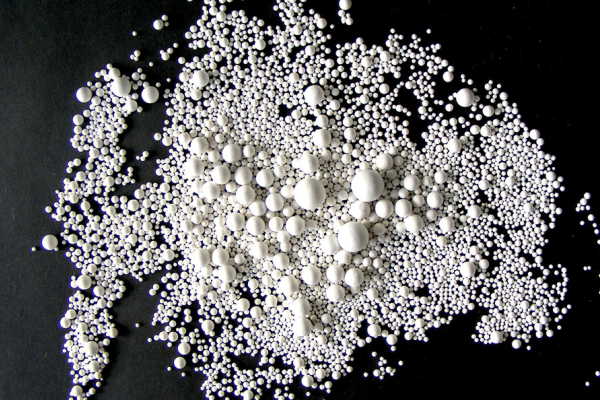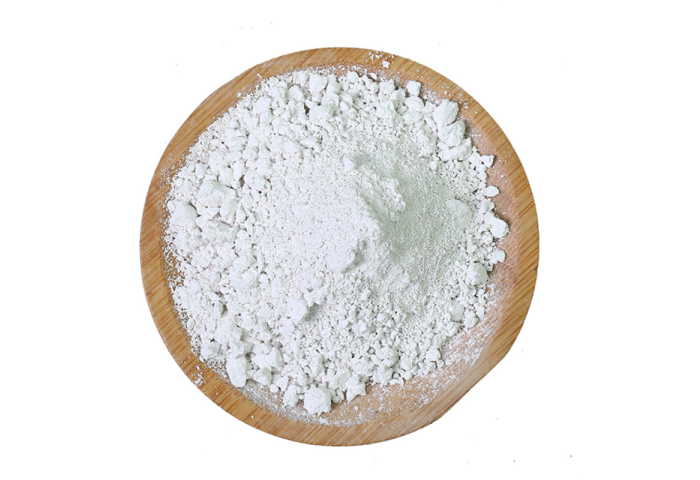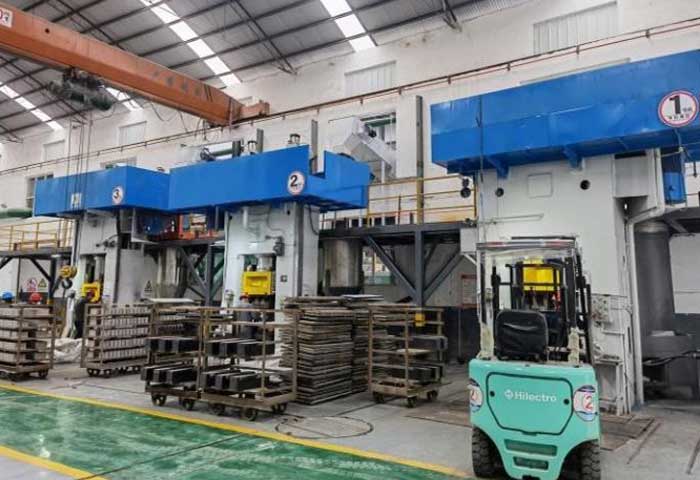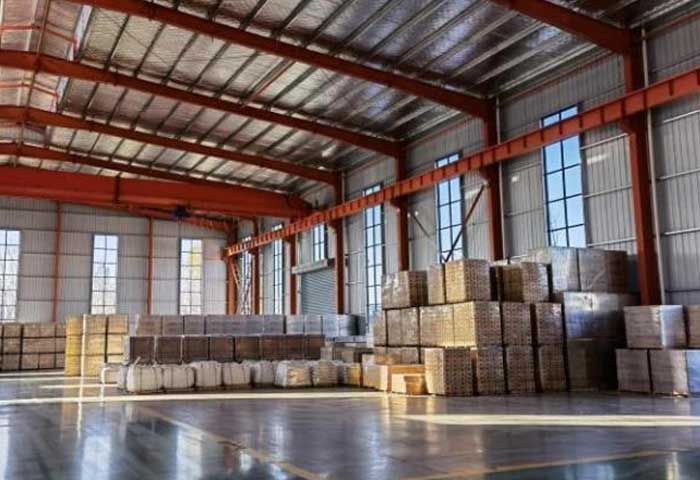Zirkoniumsilikat

Zirkoniumsilikat er en høy kvalitet og billig keramisk glasuremulgering, Hovedsakelig brukt i produksjonen av fargeglasur for arkitektonisk keramikk, Sanitær keramikk, Daglig keramikk, og elektrisk porselen, med fin partikkelstørrelse, God spredning, sterk dekkekraft, God emulgering, God fluiditet, etc. Det har sterk slitemotstand og en blekingseffekt.
Per ildfaste fabrikk tilbyr zirkoniumsilikatprodukter av høy kvalitet. Vi har vært engasjert i å levere industrielle ildfaste stoffer i lang tid og har et godt rykte blant et bredt spekter av kundegrupper, Og vi sikrer kvaliteten og konsistensen på produktene våre. Kontakt oss for en konkurransedyktig pris av zirkoniumsilikat.
Egenskapene til zirkoniumsilikat

Produkter Beskrivelse
Produktnavn: Zirkoniumsilikat
ZRO2+HFO2: 50%-65%
Spesifikk tyngdekraft: 4.69g/cm3
FE2O3≤0,15
TiO2≤0,25
Brytningsindeks: 1.3-1.97
Zirkoniumsilikat er et luktfritt hvitt eller off-white pulver. Med en høy brytningsindeks av 1.93-2.01 og kjemisk stabilitetsytelse, Det er en høy kvalitet og billig emulgator. Det er mye brukt i produksjonen av forskjellige arkitektoniske keramikk, Sanitær keramikk, Daglig bruk keramikk, Førsteklasses håndverkskeramikk, etc. Det er mye brukt i behandlingen og produksjonen av keramiske glasurer og har en stor applikasjon.
Zirkoniumsilikat er også mye brukt i produksjonen av keramikk på grunn av dens gode kjemiske stabilitet. Det påvirkes derfor ikke av skyteatmosfæren av keramikk, Og det forbedrer billet-glasurbindingsegenskapene betydelig og øker hardheten i keramiske glasurer. Zirconium -silikat brukes også videre til produksjon av fargebilder i TV -bransjen, emulgerte glass i glassindustrien, og emalje glasurer for emaljer.
Zirkoniumsilikat har et høyt smeltepunkt: av 2,500 Grader celsius, Så det er også mye brukt i ildfaste materialer, glass ovn zirkonium tamping materialer, Helling av materialer, og spraybelegg.
Når zirkoniumsilikat med høy ytelse har både bleking og stabiliseringsforhold, Det har bedre ytelse enn konvensjonelt zirkoniumsilikat når det gjelder zirkoniumsilikatpulver, Partikkelmorfologi, Partikkelstørrelsesområde, spredningsytelse i media, og emulsjonsavbøyning etter mursteinsbillet eller glasurpåføring.
Den blekende effekten av zirkoniumsilikat skyldes dannelsen av plagioklase, etc. Etter keramisk skyting, som resulterer i spredning av hendelseslette bølger, og denne spredningen kalles generelt stor partikkelspredning eller miescattering.
Kombinere teoretiske beregninger og den faktiske situasjonen for pulverproduksjon, Kontrollerer D50-verdien av zirkoniumsilikat med høy ytelse under 1,4um og D90 under 4.0um (Basert på verdien målt av den japanske laserpartikkelanalysatoren) vil gi den beste emulsjonsblekingseffekten.
Det konsentrerte partikkelstørrelsesområdet er viktig i den blekende effekten av zirkoniumsilikat, og det er påkrevd å oppnå en så smal fordeling av partikler som mulig under slipeprosessen med zirkoniumsilikat.
Kjennetegn på zirkoniumsilikat i bruk
Resultatene av bruken av nanoskala zirkoniumsilikat i produksjonen av keramikk og funksjonelle materialer viser følgende egenskaper.
1. Som tilsetningsstoff til keramiske glasurer, zirkoniumsilikat øker hvitheten, styrke, slitestyrke, Hydrolysisresistens, og korrosjonsmotstand med synkende partikkelstørrelse innenfor et visst størrelsesområde, øker selvrensende evne, og reduserer dosering.
2. På grunn av den sterke motstanden mot hydrolyse av nanoskala zirkoniumsilikatpulver, Det kan brukes som bærer av nano-funksjonelt pulver i et vandig miljø. For eksempel, Nano-energi-steinen tilberedt av Hexiang Company bruker zirkoniumsilikat for nanogradering som bærer som bærer.
3. På grunn av dens sterke oksidasjonsmotstand, Nanoskala zirkoniumsilikat kan brukes som overflatebeleggsmiddel for funksjonelle pulver. For eksempel, Den røde glasuren til kinesisk rød keramikk er laget av nanoskala zirkoniumsilikat som beleggemidlet, og fargen er rød og lys uten å falme.
4. På grunn av sin høye styrke og god slitasje motstand, Zirconium-silikatpulver nano-klasse er et råstoff av høy kvalitet for slipende medier og ingeniørkeramikk.
Zirconium -silikatets rolle i glasur
Zirconium -silikatets rolle i keramisk glasur: I prosessen med å lage keramikk, Mange materialer brukes, Og hver av dem spiller en annen rolle til venstre og høyre. En av dem er zirkoniumsilikat, som brukes ofte.
1. Zirkoniumsilikat er ikke-giftig, smakløs hvitt eller off-white pulver, Råstoffet er naturlig zirkoniumsandkonsentrat med høy renhet, og behandlet deretter gjennom ultra-fin sliping, Jernfjerning, Titanbehandling, Avhending av utseende, etc. Det er en god kvalitet, rimelig keramisk glasuremulgering, Whitening Agent, Anti-sorge middel, og stabilisator.
2. Zirconium -silikat er mye brukt i produksjonen av forskjellige arkitektoniske keramikk, Sanitær keramikk, Daglig bruk keramikk, og førsteklasses håndverkskeramikk, etc. Blant dem, Det brukes mye i prosessering og produksjon av keramisk glasur og brukes i store mengder. På grunn av den kjemiske stabiliteten, Zirconium -silikat påvirkes ikke av skyteatmosfæren av keramikk, Og det kan forbedre billet-glasurbindingsegenskapene til keramikk og øke hardheten i keramiske glasurer.
3. Zirconium -silikat kan også spille en blekende rolle i keramiske glasurer, Fordi zirkoniumsilikat vil utgjøre plagioklase, etc. Etter keramisk skyting, som kan utgjøre spredning av hendelseslette bølger, dermed oppnå emulgering og bleking.
4. Denne spredningen kalles vanligvis stor partikkelspredning eller mie -spredning, og hvis D50-verdien av zirkoniumsilikat med høy ytelse kontrolleres under 1,4um og D90-verdien styres under 4.0um, da vil det ha en veldig god emulsjon og blekingseffekt.
5. For å oppnå en bedre hvitende effekt av zirkoniumsilikat, Det er viktig å ha et konsentrert partikkelstørrelsesområde, Så slipeprosessen med zirkoniumsilikat bør være så smalt fordelt som mulig.
6. Zirconium -silikat brukes også ofte i produksjonen av fargebilder for TV -bransjen, emulgerte glass for glassindustrien, og emalje for emaljer. Zirkoniumsilikat har et høyt smeltepunkt på omtrent 2500 Grader celsius, Så det er også mye brukt i ildfaste materialer, glass ovn zirkoniummosematerialer, Helling av materialer, og spraybelegg.
Å legge zirkoniumsilikatet til glasurer kan ikke bare forbedre billet-glasurseparasjonen av keramikk, og forbedre hardheten i keramisk glasur, men kan også spille en blekende rolle.
Om PER Refractories Company


PER Refractories Company er lokalisert i Xinmi City, Henan-provinsen, hjembyen til ildfaste materialer i Kina. Vårt firma er en teknologibasert ildfast bedrift som integrerer R&D, produksjon, salg, og teknisk service. De rike ressursene og den utmerkede kvaliteten i territoriet gir enestående overlegne forhold for produksjon av ildfaste materialer. Våre hovedprodukter er ildfast leirstein, høy alumina ildfast murstein, ildfast silika murstein, magnesium ildfast murstein, mullitt murstein, isolasjon murstein, og andre høytemperaturbestandige produkter.
Selskapet PER ildfaste er produksjonen base av grønne, energisparing, og miljøvennlige nye ildfaste materialer. Vårt firma har bestått ISO9001:2008 internasjonal sertifisering av kvalitetssystem og GB/T24001-2004 / ISO14001:2004 sertifisering av miljøledelsessystem, sertifisering av bedriftskvalitet inspeksjonsbyrå. Våre produkter selges godt i mer enn 20 land over hele verden. De er de foretrukne ildfaste produktene for metallurgi, ikke-jernholdige, petrokjemisk, glass, keramikk, og annen ildfast industri.
